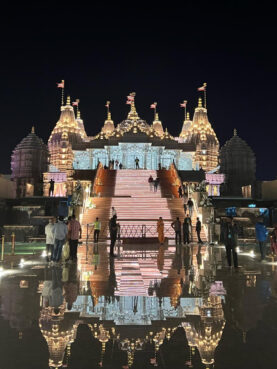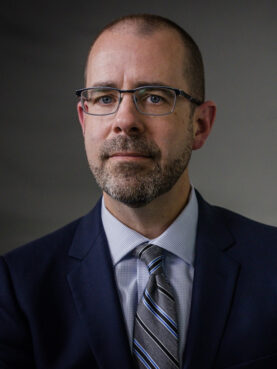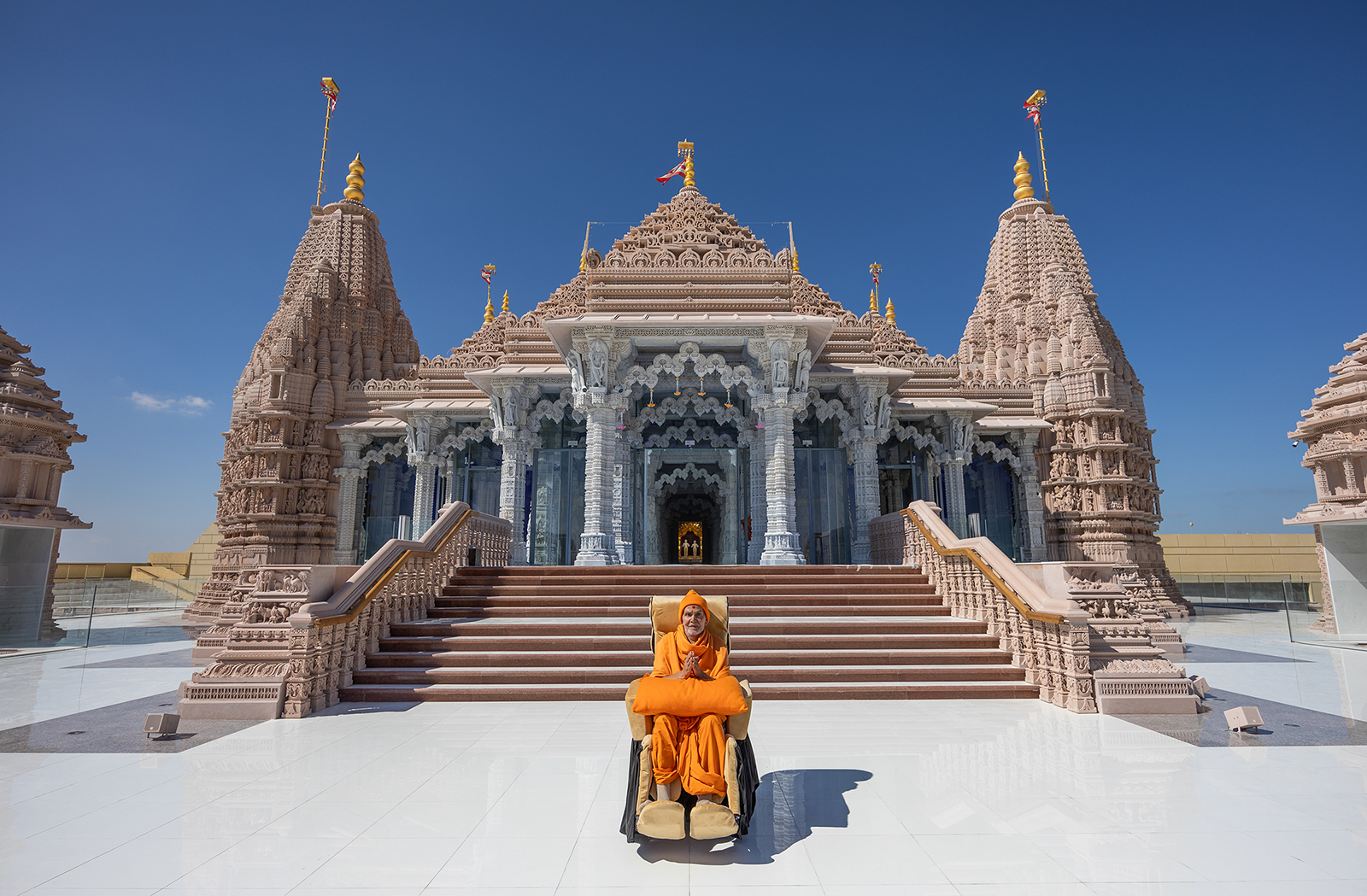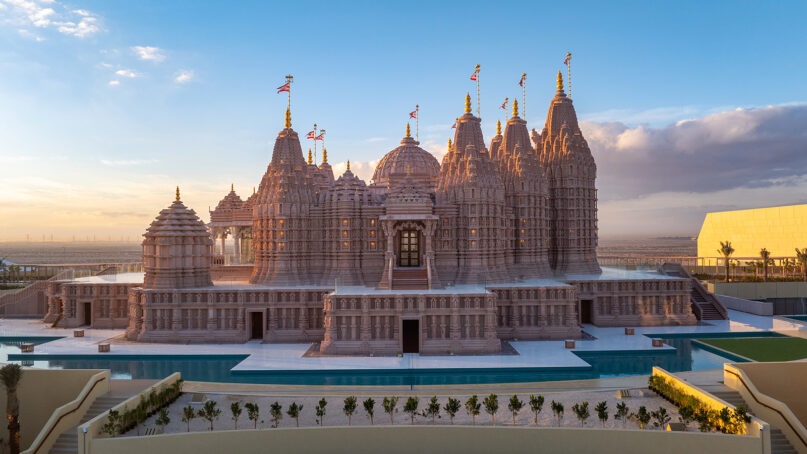(RNS) — For the first time in the 52-year history of the Muslim nation, a traditional Hindu temple has been inaugurated in the United Arab Emirates, the realization of seven years of planning between India and the Emirati government and a boon for many of the UAE’s 3.5 million Indian expatriates.
Sheikh Nahyan bin Mubarak Al Nahyan, the UAE minister of tolerance and coexistence, joined Indian Prime Minister Narendra Modi and the presiding leader of the Hindu denomination BAPS, Mahant Swami Maharaj, in Abu Dhabi on Wednesday (Feb. 14) for a ceremony in which the pran, or energy of the Divine, was consecrated inside the murti, or idol, that stands in the new temple.
In February 2018, UAE President Sheikh Mohamed bin Zayed Al Nahyan granted 27 acres to Modi, who in turn tapped BAPS (an acronym for Bochasanwasi Shri Akshar Purushottam Swaminarayan Sanstha), which has become known for its beautiful mandirs around the world, to design the new temple.
“The mandir is nothing short of a miracle,” said Yogi Trivedi, a scholar of Hinduism and media at Columbia University. “The confluence of the right people, the right moments, and the right leaders allowed for it to become a reality.”

The new BAPS Hindu Mandir of Abu Dhabi is reflected in water. (Photo courtesy of BAPS Hindu Mandir of Abu Dhabi)
The result is a monument of Indian sandstone covered in carved Italian marble, with seven spires, one for every emirate of the UAE. The stone carvings feature motifs from both Indian and Arab cultures, including Indian elephants and mangoes and Arabian camels and dates.
Trivedi calls the mandir “a syncretic story of Indian and Arab civilization and values” that celebrates two countries, but “one set of universal spiritual values.”
In addition, the UAE identified the project’s chief architect as a Christian and other key personnel as Buddhist, Sikh, Jain, Zoroastrian and atheist. “Its story will teach those around the world how by learning of others and trusting them, we can come together and not drift apart,” said Trivedi.
Knox Thames, a former special adviser for Near Eastern and South Asian religious minorities at the U.S. Department of State, said the new mandir is part of a “decades-long trend” of the UAE’s efforts to accommodate the “spiritual and religious needs of the millions of expatriates that are working in the country.” Indian immigrants, who make up 30% of the population, are the largest ethnic community in the UAE.
Just last year, Al Nahyan opened the Abrahamic Family House, a complex in Abu Dhabi that includes a Christian church, a synagogue and a mosque, all facing a planted plaza.
“For their government to build a synagogue was groundbreaking, and this was sort of the next step, building a Hindu temple,” said Thames. The building spree signals “interfaith tolerance that gives a good example to the region and the world,” he said, but is also “good for business” and will “attract the best talent, the hardest workers.”

Knox Thames. (Courtesy photo)
The mandir not only serves a spiritual purpose but a diplomatic one, Knox said, noting that Modi, who has moved since his election in 2014 to rebrand India as a Hindu state, counts BAPS as an ally. Despite what many say is a crackdown on Muslim influences in India, Modi has also been courting the leadership of the UAE. “Building this Hindu temple is part of that diplomacy. It checks lots of boxes for them,” said Thames.
The mandir’s Dome of Harmony, a companion to its Dome of Peace, was designed and donated by a Muslim architect. For the first year after the mandir’s opening, prasad — the sanctified food offered to visitors — will be provided by a Muslim vendor.
The message of the project is clear: While historic for Hindus, the mandir is a showcase for the tolerance its resident Hindus have enjoyed from the Muslim leadership of the UAE.
While arranged by the Emirati president and Modi, the mandir was a vision of the previous spiritual leader of BAPS, Pramukh Swami Maharaj, who first dreamed of a Hindu temple in Abu Dhabi in 1997. The swami, who is credited with opening some 1,500 temples worldwide, was also behind the construction of the recently inaugurated BAPS mandir in Robbinsville, New Jersey, the largest Hindu temple in North America.
Puja Dilip Satikunvar, a Hindu UAE native who grew up, in lieu of a temple, performing rituals and worship in her home, said the temple’s construction felt like a dream come true. “For all the years in my life being in this country, I’ve seen how we celebrate each other’s cultures,” said Satikunvar, who is looking forward to celebrating iftar dinner — the meal that breaks the daily fast during Ramadan — with her Muslim friends next month.
Now, she is excited to bring Muslim, Catholic and Sikh friends to see the mandir. “I’m so happy that we together can be a part of something like this.”
“One of the greatest achievements by any society is how well it is able to accept, embrace, and celebrate others,” said Brahmaviharidas Swami, BAPS’ chief monk in Abu Dhabi, adding that ”the Hindu community is grateful to have a home where we are welcome and celebrated.”

His Holiness Mahant Swami Maharaj poses in front of BAPS Hindu Mandir of Abu Dhabi. (Photo courtesy of BAPS Hindu Mandir of Abu Dhabi)
When BAPS devotee Premvati Patel moved from London to the UAE about seven years ago, her biggest worry was whether she would be able to pass along her cultural and religious values to her two daughters. When the mandir project was announced soon after she arrived, she said, she felt as if she was meant to be there. “I just felt this lightness in my heart,” said Patel.
BAPS devotees in the UAE like Patel plan to help maintain the temple, polishing its stones or even cleaning out gutters. “I can help with doing that seva,” she said, referring to a principal concept in Hinduism, and especially for Swaminarayan followers, of selfless service as a form of devotion to God.
“But most importantly,” she said, “my girls will have the opportunity to be a part of making history.”
Nazem Al Kudsi, a Muslim and a prominent businessman who once managed the Abu Dhabi Sovereign Fund, said he was surprised when he heard the temple would be built, but he is hopeful about its message.
“As a practicing Muslim who has lived in several nations around the Middle East, I would have never imagined that a traditional stone Hindu temple would be built in this part of the world,” said Al Kudsi. “The world needs more such mandirs, not just because of how beautiful they are but because the hope and promise of what they will bring for people, communities and nations tomorrow.”
For her part, Patel is glad for the attention the mandir will get this week, but she looks forward to a moment of silence after the fanfare, when she can “reflect on the creation that is.”
“When you come to a mandir like this, you realize there are things bigger than yourself,” said Patel. “That doesn’t come down to your color or creed or culture or religion,” she added. “Humanity is bigger than that. And I think that’s what this mandir truly represents.”





